GDP vs GNI Explained | Remittance-to-GDP Ratio | Misrepresentation of Remittances
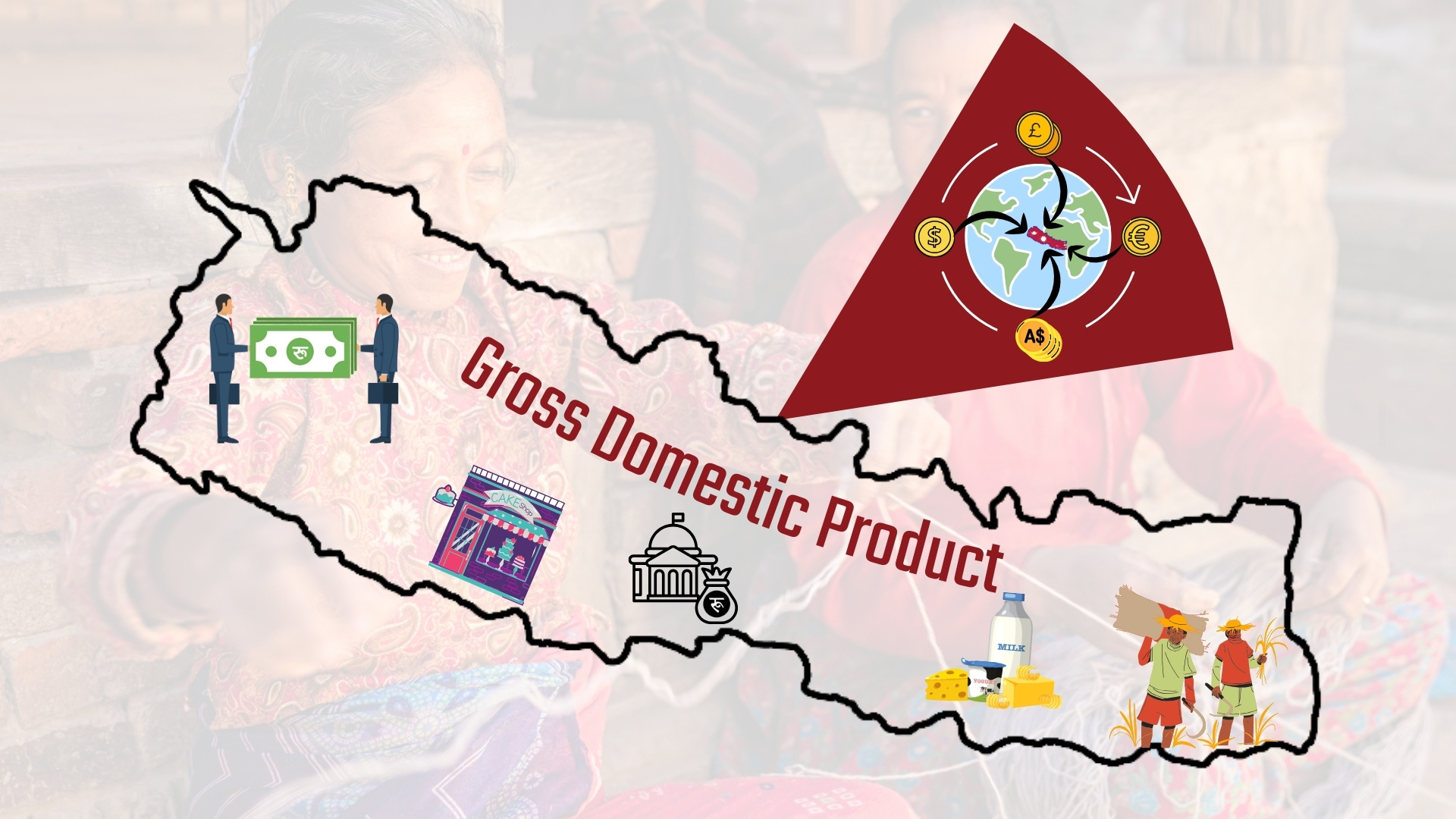
A couple of weeks ago, at an event which discussed the Nepali US diaspora’s contributions to the Nepal economy, Akhilesh Upadhyaya, a notable geopolitical analyst and formerly editor-in-chief of a leading publication of Nepal, made a startling claim that remittance contributes around 25% to the country’s Gross Domestic Product (GDP).
This statement, though spoken with authority, suggests a troubling trend. Over the years, researchers, experts, reports and social media have propagated this misconception — remittances are a direct part of the GDP or that the GDP is composed of remittance. The misrepresentation has gone unchecked for a long time, and now extends to students.
Remittances are financial transfers sent by migrant workers to their families or relatives in their home country, which are typically sent through banks, money transfer services, or even informal channels. They can be used anywhere in the economy in supporting basic needs like food, healthcare, education to housing and in consumption of mobile phones, laptops or bikes to investments in businesses.
The GDP is the total market value of all goods and services produced within a country’s border over a specific period, a year or a quarter, and measured in current prices (or nominal prices) and serves as a key measure of a country’s economic size and performance.
But many individuals when mentioning remittance in relation to GDP seek to make erroneous inference that remittance is a part of this calculation or it contributes to GDP. This is not the case. Remittances are not included in GDP.
In reality, what some of them are typically referencing is the remittance-to-GDP ratio, similar to how the public debt-to-GDP ratio is used, but the clarity or distinction is often absent.
Here are a few other examples of such misrepresentation:
A screenshot from a recent press release from the International Fund for Agricultural Development (IFAD):
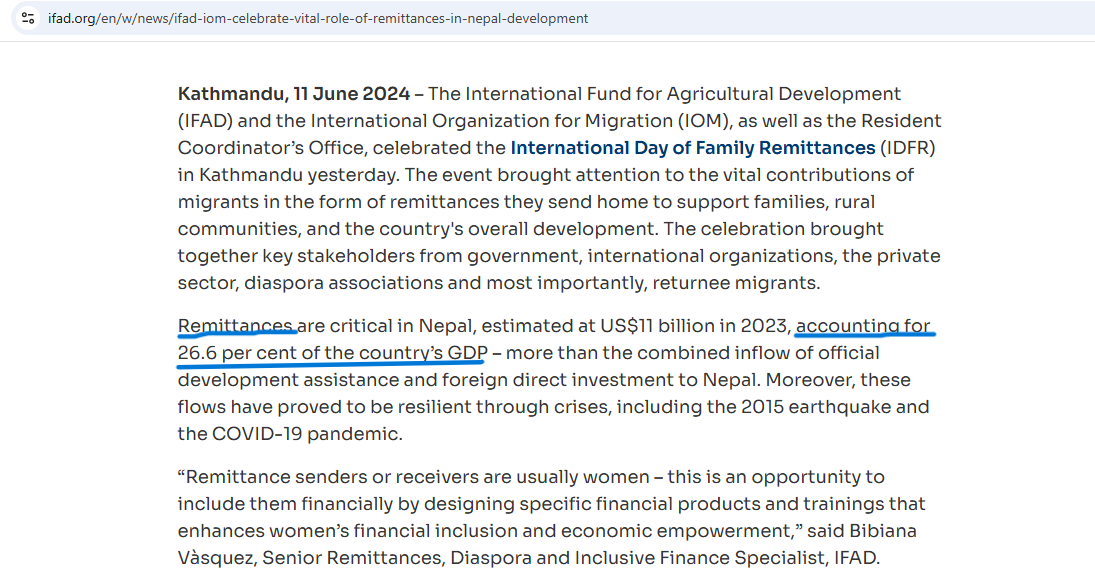
A paper published in the Nepal Rastra Bank Economic Review:
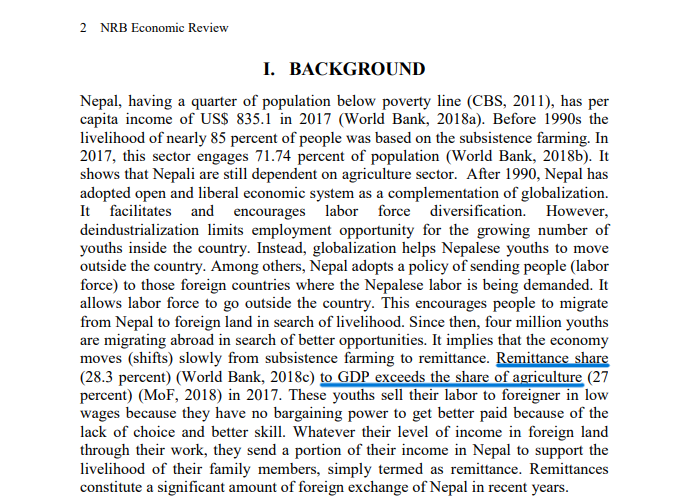
Similarly, in this year’s Nepal Literature Festival panel discussion, former Miss Nepal Shrinkhala Khatiwada mentioned along the lines that remittance contributes to the GDP.
Similarly, Youtuber Binayak Kuikel made a similar reference when discussing remittance in his vlog episode — Remittance is NOT helping!! while citing an article published in The Kathmandu Post that too made the same reference [image below].
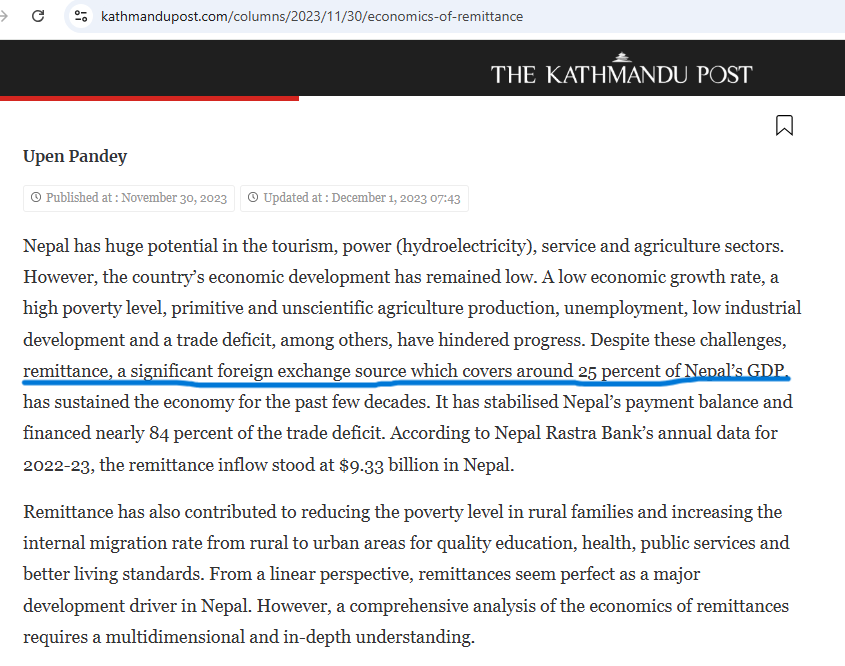
The list is long enough.
Why remittance is not a part of GDP
To grasp why remittances are excluded from GDP, it’s sufficient to understand that GDP is the monetary measurement of value of goods and services produced within the border of the country. While remittances are simply income or financial transfers from one individual to another. There is no exchange of goods and services.
As such, they do not themselves contribute to the actual production of those goods and services although these transfers play an important role in supporting the consumption of goods and services.
Since they do not have a direct effect on domestic production, they do not directly contribute to GDP growth.
If a Nepali migrant in the US sends $1,000 to their family here, this money is not tied to the production of any new goods or services in Nepal. The money helps support the family’s consumption, but it does not represent any domestic economic activity, such as manufacturing or service provision.
While they can drive consumption (the ‘C’ component of the GDP in the equation above) — since families receiving remittances might spend on goods and services — this increased demand is reflected in consumption rather than in the GDP.
The inflow of remittances can therefore influence other economic measures, such as consumption and the trade balance, but not the GDP.
For more clarity, understanding how GDP is measured can help.
Understanding GDP components
The measurement of GDP has four primary components when measured under expenditure category:
→ GDP = C + I + G + NX
Here,
Consumption expenditure (C) by households on goods and services.
Investment expenditure (I) by businesses and government on goods and services such as capital goods: industrial plants and machinery, raw materials, softwares, etc.
Government expenditure (G) on goods and services.
Net Exports (NX or, X-M): The difference between a country’s exports and imports (exports minus imports).
Here is the actual composition and measurement:
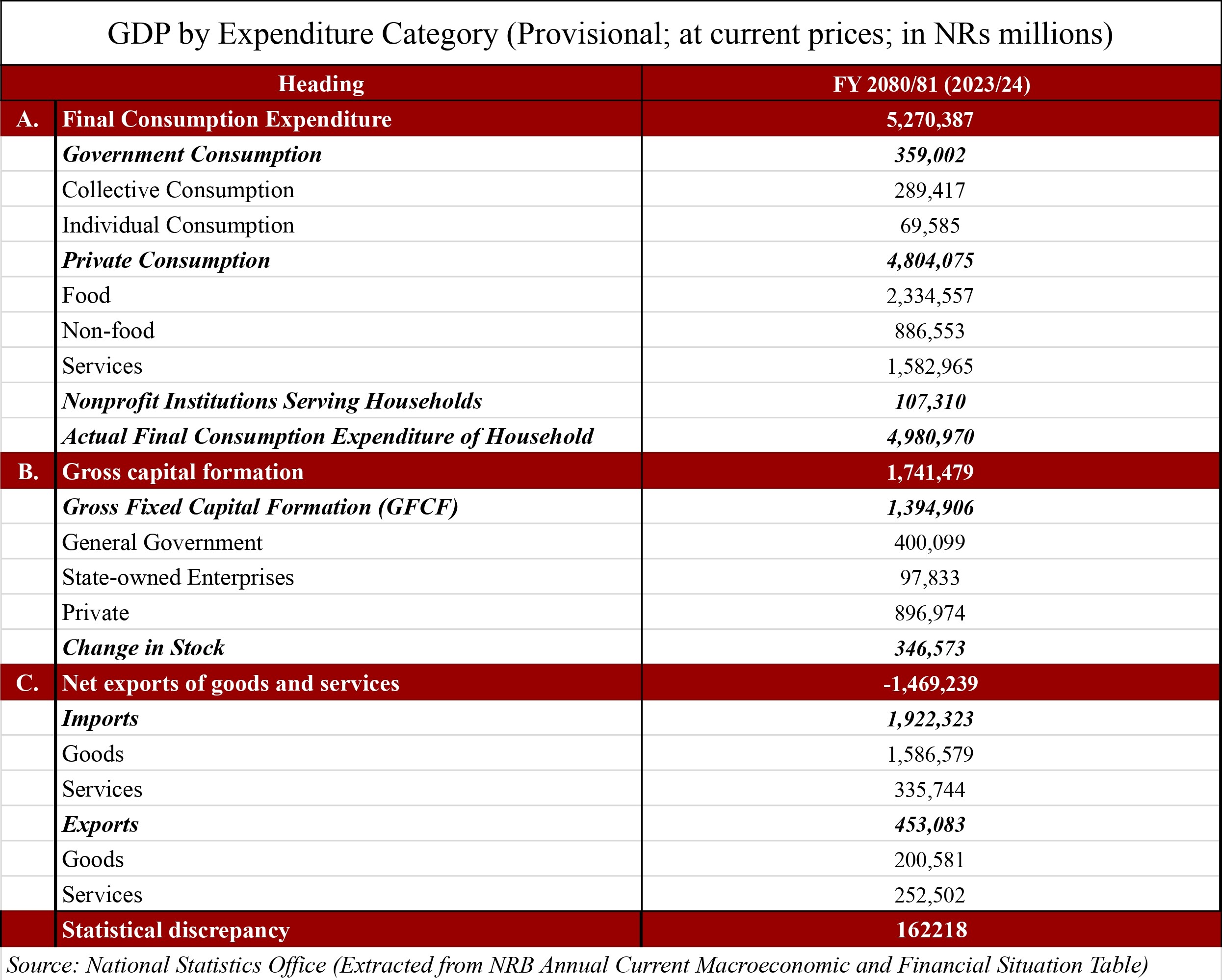
The reason imports are subtracted from the overall calculation above [see equation 1, Re: X-M] is because a part of expenditures made by consumers, firms and government can be on imported goods and services. However, GDP specifically measures the value of goods and services produced within a country’s borders, not those produced abroad. It is why exports are added to the equation, imports are deducted.
One might question whether income transfers could be used for these expenditures. That’s true. However, they could have been spent on imported goods and services, which are accounted for by subtracting imports (X-M) from the calculation.
However, remittances have the potential to influence growth, providing households, businesses and the country with funds. They drive consumption and investment expenditure which indirectly contribute to government taxes. But again, there aren’t ample studies on the utilisation of remittances. As noted earlier, a significant portion of these funds is likely spent on imported goods and services. This inference is supported by the rising levels of both remittances and imports in Nepal over the past decades.
Economic impact of remittances
Just because remittances are not counted as part of GDP, it doesn’t mean they cannot have a substantial impact on the economy.
Remittances make up a significant portion of household income in Nepal and have helped reduce poverty, improved access to education and healthcare and supported the broader economy by influencing aggregate demand, even if remittances themselves are not included in the official GDP calculation.
Remittances also help stabilise economies during financial crises or political instability by providing a reliable source of income for families.
Additionally, they contribute to increased savings, which can later be used for investment in businesses or infrastructure projects, further stimulating economic growth.
Instead of being counted as part of GDP, remittances are considered in another metric of economic well-being — Gross National Income (GNI), which accounts for income received by the country’s residents, regardless of where they are earned.
Read More Stories
Kathmandu’s decay: From glorious past to ominous future
Kathmandu: The legend and the legacy Legend about Kathmandus evolution holds that the...
Kathmandu - A crumbling valley!
Valleys and cities should be young, vibrant, inspiring and full of hopes with...
Today’s weather: Monsoon deepens across Nepal, bringing rain, risk, and rising rivers
Monsoon winds have taken hold across Nepal, with cloudy skies and bouts of...